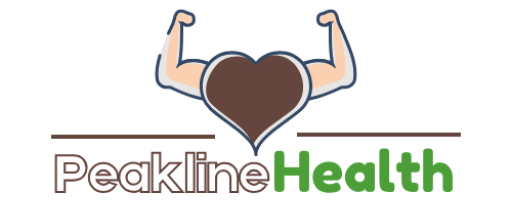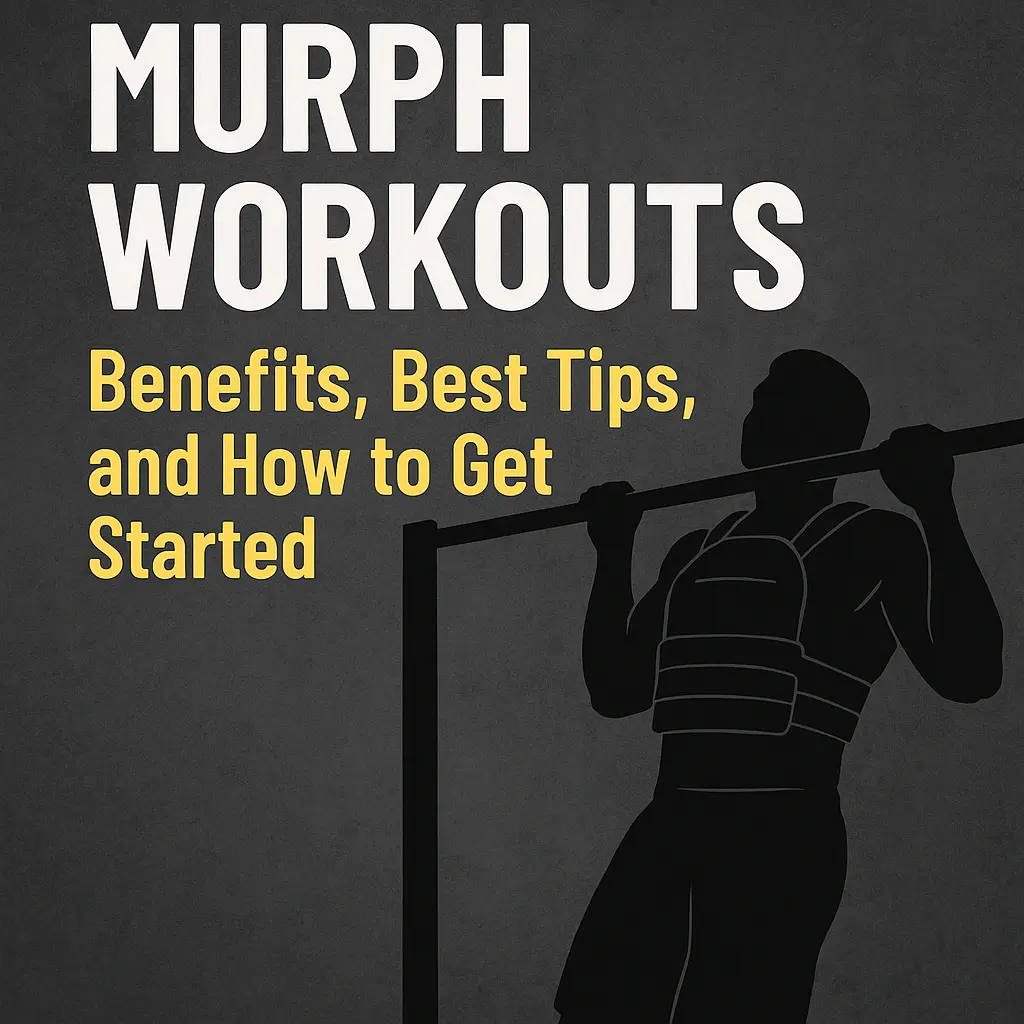Introduction: What Are Murph Workouts?
Introduction: What Are Murph Workouts?
The Murph workouts are more than just a fitness routine—it’s a true test of strength, endurance, and mental resilience. Named after Lieutenant Michael P. Murphy, a Navy SEAL who sacrificed his life in Afghanistan, this workout carries deep meaning in the fitness world.
The Origins of “Murph”
Originally, Murphy called this routine “Body Armor.” It includes a 1-mile run, 100 pull-ups, 200 push-ups, 300 air squats, followed by another 1-mile run. All of it is done while wearing a 20-pound weighted vest. After his passing, CrossFit renamed the workout “Murph” to honor his legacy. Since then, it has become a legendary WOD (Workout of the Day) across CrossFit gyms globally.
A Memorial Day Tradition
Importantly, each year on Memorial Day, thousands of athletes and everyday fitness enthusiasts take on the Murph workouts challenge. They do so not only to test their limits but also to pay tribute to fallen soldiers. As a result, this workout has transformed into a powerful symbol of discipline, sacrifice, and community.
Why Murph Stands Out in CrossFit
In the CrossFit world, Murph is seen as a heroic workout. It demands a strong heart, a tough mindset, and serious physical grit. Furthermore, it mixes cardio and bodyweight movements in a way that pushes both beginners and elite athletes. Many people even track their Murph workout time each year as a personal milestone.
Accessibility and Adaptability
One of the reasons Murph is so popular is its accessibility. You don’t need expensive equipment—just a pull-up bar, your body weight, and some determination. Of course, beginners can start with Murph workout modifications. For example, they can split the reps into smaller rounds or skip the weighted vest entirely. These adaptations make the challenge more approachable.
Murph’s Global Impact
Over time, Murph’s popularity has spread far beyond the CrossFit box. Today, military personnel, athletes, and fitness influencers around the world take on this workout. Moreover, the rise of social media has fueled the challenge’s growth. People share their times, tips, and strategies online—encouraging others to join the movement.
The Mental and Physical Challenge
Clearly, what makes Murph special is its unique blend of simplicity and intensity. While it doesn’t require much to begin, finishing it takes effort and mental toughness. With every push-up, squat, and step, participants reflect on the meaning behind the challenge—to honor someone who gave everything.
Notably, the Murph workout isn’t just about building strength. It also sharpens your mental discipline. Those who want to take it seriously often follow a Murph workout training plan. They prepare with endurance drills, strength training, and recovery techniques like stretching, foam rolling, and proper nutrition.
Who Can Benefit from Murph?
Ultimately, whether you’re a complete beginner or a seasoned athlete, Murph will push you. It helps you build physical fitness, mental clarity, and a deeper sense of purpose. More importantly, it connects you with a community that values perseverance and honor.
In the next sections, you’ll discover the most important benefits of Murph workouts, expert-backed tips for better performance, and a step-by-step guide tailored for beginners. So, if you’re ready to grow stronger inside and out, the Murph workout is an incredible place to begin.
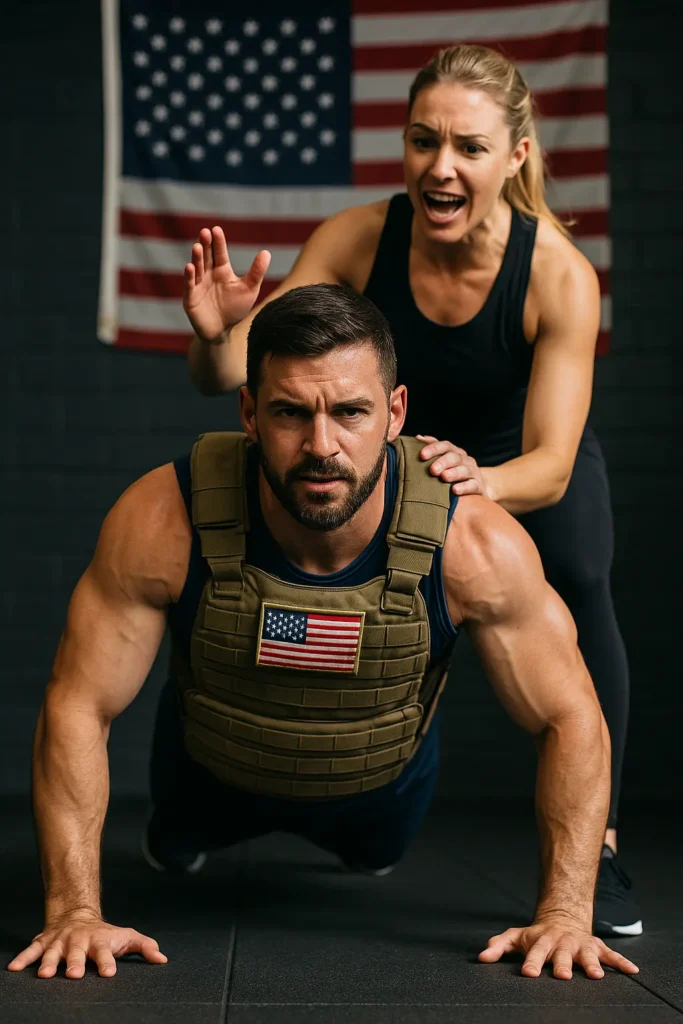
Murph Workouts: Benefits for Strength and Endurance
The Murph workout is more than just another CrossFit challenge. It’s a test of full-body fitness, mental grit, and overall stamina. Designed to push you physically and mentally, the Murph workout honors Lieutenant Michael Murphy, a Navy SEAL who gave his life in combat. It’s become a global tradition, especially on Memorial Day, and a true benchmark for strength, endurance, and resilience.
Let’s explore how Murph workouts improve endurance, build strength, and forge mental toughness — making them a favorite in the CrossFit community and beyond.
How Murph Workouts Build Endurance
Focus on Cardiovascular Benefits
The Murph workout begins and ends with a one-mile run. While this may seem simple, combining it with 100 pull-ups, 200 push-ups, and 300 air squats in between makes it grueling. These movements, when done in a continuous loop, elevate your heart rate and keep it there for an extended period. This is where the endurance magic happens.
Running alone improves cardiovascular health. But in the Murph, running under fatigue enhances it even more. After finishing 300 squats, your heart is already working hard. Going into a run with tired legs challenges your VO2 max, which measures how efficiently your body uses oxygen.
Additionally, doing high-rep bodyweight movements increases cardiovascular load. Your lungs, heart, and circulatory system must work overtime to deliver oxygen to your muscles. As a result, your cardiovascular system adapts, becoming stronger and more efficient over time.
Over weeks of consistent Murph training, your heart becomes more resilient. It pumps blood more effectively, while your lungs learn to handle stress better. As a result, your overall stamina improves, even in other sports or physical activities.
Improving Stamina Over Time
Stamina isn’t built overnight. Murph workouts require consistency and progression. You don’t start by doing the full workout unbroken. Instead, you build up your capacity by scaling the reps and splitting the sets.
Let’s say you begin by performing half Murph: a 0.5-mile run, 50 pull-ups, 100 push-ups, and 150 air squats. Over time, as your muscles adapt and your energy systems improve, you can slowly add reps or decrease rest periods.
This gradual progression trains your muscular endurance and aerobic capacity. Your body becomes more efficient at clearing lactic acid and replenishing energy stores. Ultimately, this results in longer, more intense workouts without burnout.
The high volume of repetitive movements also strengthens your mental pacing strategies. You learn how to manage fatigue, how to breathe under stress, and when to push or rest — critical tools for any endurance athlete.
Moreover, the Murph workout’s structure mimics real-life endurance events: long periods of steady exertion interrupted by short moments of intense output. Whether you’re training for a Spartan Race, a marathon, or military fitness tests, Murph serves as a fantastic benchmark.
Strength Gains from Murph Workouts
Enhancing Functional Strength
Murph workouts aren’t just for endurance. They develop functional strength, which is strength that applies to real-life activities. Unlike isolated weight training, Murph uses compound bodyweight movements like pull-ups, push-ups, and squats — movements that engage multiple muscle groups at once.
Pull-ups strengthen the back, shoulders, and arms, especially the lats and biceps. Push-ups target the chest, triceps, and core. Squats work the legs and glutes while engaging the lower back and core for stabilization. Together, they form a full-body workout.
Performing hundreds of reps under fatigue forces your muscles to adapt quickly. You build muscular endurance, sure — but you also improve neuromuscular efficiency, which means your brain becomes better at activating muscles efficiently.
When you add a weighted vest (20 lbs for men, 14 lbs for women), the workout becomes even more strength-focused. The extra load forces your muscles to work harder, increasing resistance and stimulating hypertrophy (muscle growth). This added weight turns Murph into a hybrid between endurance training and resistance training.
Moreover, performing the workout regularly develops strong connective tissue, including ligaments and tendons. These tissues support your muscles and joints, reducing injury risk and improving performance in other workouts.
Impact on Muscle Groups (Legs, Back, Arms)
The Murph workout hits nearly every major muscle group. Let’s break it down:
- Legs: The 300 squats alone are enough to fire up your quads, hamstrings, glutes, and calves. These muscles are essential for running power, jumping, and lower-body strength.
- Back and Arms: The 100 pull-ups target your lats, traps, rhomboids, and biceps. These are key for posture, pulling movements, and upper-body symmetry.
- Chest and Core: The 200 push-ups engage your chest, shoulders, triceps, and core. Maintaining tight form strengthens your abdominals and lower back.
Because the workout doesn’t isolate one muscle at a time, it develops balanced strength. You train your body to work as a unit, which improves coordination, muscle balance, and control — essential for both athletes and everyday functionality.
Doing Murph regularly also improves grip strength, especially if you’re using strict or kipping pull-ups. This often-overlooked aspect of fitness has a strong correlation with overall health and longevity.
Mental Toughness and Resilience with Murph Workouts
The Psychological Challenge of the Murph Workout
Completing a full Murph is no small task. It takes 40 to 60 minutes for most people — all of it under physical stress. The sheer volume of reps can feel overwhelming, especially midway through. Your body screams for rest. Your mind wants to quit. But pushing through builds mental toughness.
The workout teaches you to embrace discomfort. You learn to move forward even when it hurts. This ability to push past limits is valuable in all aspects of life — from sports to work to personal goals.
Murph workouts also teach you discipline. You can’t finish this WOD unless you stay focused. You must break the workout into small parts, track your sets, and manage fatigue. This mental discipline transfers into other areas of your life.
Furthermore, the emotional connection to Murph adds another layer of motivation. Knowing that you’re doing this in memory of a fallen hero gives the workout deeper meaning. You’re not just training — you’re honoring courage, sacrifice, and commitment.
How It Builds Determination and Focus
Sticking with Murph requires a growth mindset. Most beginners don’t finish it in one go. But with each attempt, you get better. You learn how to manage fatigue. You understand when to rest and when to push. This self-awareness builds confidence and determination.
You also gain clarity under stress. Mid-workout, your body is exhausted, but your mind sharpens. You count reps, focus on form, and block out distractions. This mental focus translates to better decision-making, both inside and outside the gym.
Additionally, overcoming the mental barriers of Murph improves your resilience. It teaches you that pain is temporary. That your body is capable of more than you think. That discomfort doesn’t mean defeat.
Every time you complete Murph — even a scaled version — you prove to yourself that you can do hard things. This builds an unshakable mindset that will carry over into work, relationships, and any personal challenge.
Conclusion
Murph workouts are powerful because they combine physical intensity with mental grit. They improve cardiovascular health, increase muscular strength, and sharpen your mental edge. Whether you’re a CrossFit athlete, a weekend warrior, or a beginner looking to get fit, the Murph workout can challenge you on every level.
If you stay consistent and focused, you’ll not only build endurance and strength — you’ll build character. And that’s what makes Murph more than just a workout. It becomes a symbol of resilience, growth, and relentless effort.
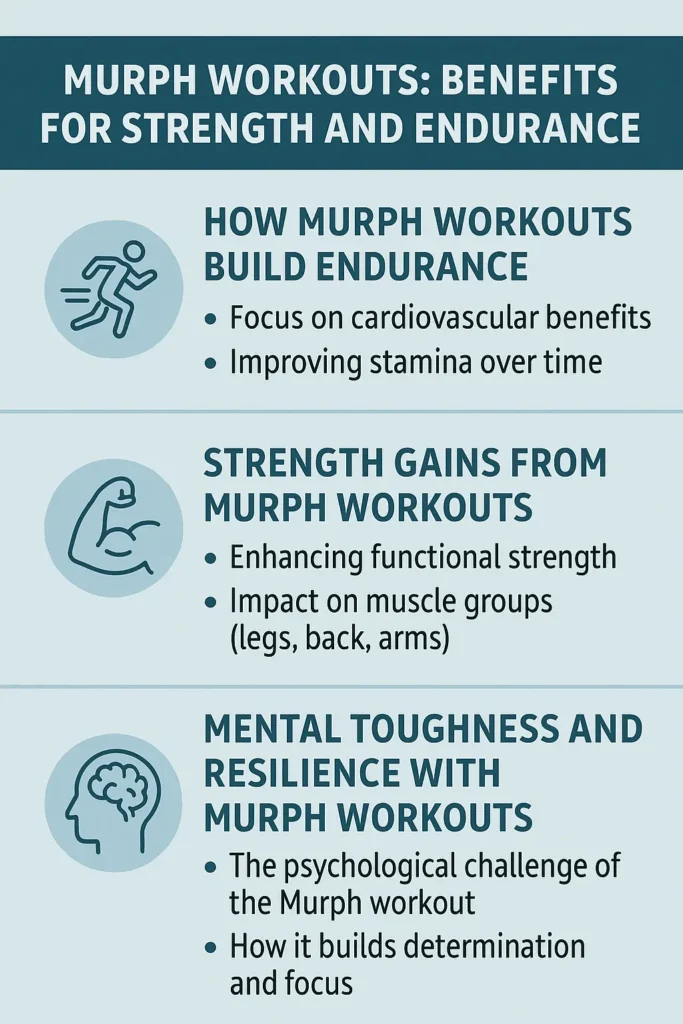
Murph Workouts: Best Tips for Beginners
Taking on your first Murph workout can feel intimidating. It’s not just a physical challenge—it’s mental, emotional, and symbolic. Originally created to honor Lt. Michael Murphy, a Navy SEAL who died in combat, this workout has since become a signature CrossFit WOD performed around the world, especially on Memorial Day. For beginners, the key to a successful Murph experience lies in preparation, pacing, and smart recovery. Let’s explore the best tips to help you confidently face your first Murph workout.
How to Approach Your First Murph Workout
The Murph workout is simple in structure, but brutal in execution. It involves:
- A 1-mile run
- 100 pull-ups
- 200 push-ups
- 300 air squats
- Another 1-mile run
All while wearing a 20-lb weighted vest (optional for beginners).
Tips for Pacing and Setting a Goal
Pacing is everything. Most beginners make the mistake of going too fast too soon. That leads to burnout before they’re halfway through the workout.
Start with a strategy. Break down the reps into smaller, manageable sets. A common approach is the 20-round method:
- 5 pull-ups
- 10 push-ups
- 15 air squats
This format helps avoid muscle fatigue and allows for steady progress. If you’re new to bodyweight training or haven’t built endurance yet, consider going slower. You don’t need to finish quickly; you need to finish well.
Set a realistic time goal. Many elite athletes complete the full Murph in under 45 minutes. As a beginner, you might aim for 60 to 90 minutes. Focus on consistency and proper form over speed.
It helps to track your progress. Record your time, the number of sets, and your modifications. This creates a benchmark for future improvement.
Importance of Proper Form
Doing 300 squats and 200 push-ups is pointless if your form is sloppy. Worse, it leads to injury.
For pull-ups, avoid swinging or jerking the body. Use a full range of motion—from a dead hang to chin over the bar.
With push-ups, keep your body in a straight line. Lower your chest to the ground and fully extend your arms on the way up. Don’t sacrifice technique for speed.
During air squats, your hips should drop below your knees. Keep your chest up, knees tracking over the toes, and heels grounded.
Poor form increases strain on joints and muscles. Take rest breaks when needed, and keep every rep clean. A controlled workout is always more effective than a rushed one.
Modifications for Murph Workouts
The beauty of the Murph workout is its flexibility. Beginners don’t need to complete the full WOD as prescribed (often referred to as RX). Smart modifications can help you scale the workout without compromising its essence.
Suggested Modifications for Push-Ups, Pull-Ups, and Running
Let’s start with pull-ups. Not everyone can do 100 strict pull-ups. Try:
- Jumping pull-ups
- Band-assisted pull-ups
- Ring rows or TRX rows
Each of these options still targets the upper body and builds strength for future improvement.
For push-ups, drop to your knees if needed. Maintain form and control. You can also elevate your hands on a box or bench to reduce the load.
Running can be tough for those with joint issues or limited cardio endurance. Instead of two full miles, try:
- 800 meters (0.5 mile) for each run
- A brisk walk or alternating walk/jog
- Replacing running with a cardio alternative (rower or bike for the same time/distance)
Start where you are. The goal is consistent effort, not perfection. Modifications ensure you complete the workout safely and effectively.
Scaling Down for Beginners
Scaling is your best friend. There’s no shame in reducing reps or volume. Here’s a popular beginner Murph scale:
- 800m run
- 50 pull-ups (or rows)
- 100 push-ups (on knees if needed)
- 150 air squats
- 800m run
You can also remove the weighted vest. In fact, most first-timers skip it. Save it for future challenges when your body is better conditioned.
Another option is the Half Murph. It’s exactly what it sounds like:
- 0.5 mile run
- 50 pull-ups
- 100 push-ups
- 150 air squats
- 0.5 mile run
It’s still a powerful test of willpower and grit, but it’s much more approachable.
Don’t compare yourself to elite CrossFitters. The Murph is personal. You’re not just honoring a hero—you’re building yourself.
Recovery Tips After Completing Murph Workouts
Many beginners underestimate the toll a Murph workout takes on the body. After 600 reps and 2 miles of running, your muscles, joints, and energy systems are taxed. Recovery isn’t optional. It’s part of the process.
Nutrition for Recovery
Your body needs fuel to rebuild. Eat a protein-rich meal within 30–60 minutes of finishing. Include complex carbs like sweet potatoes or brown rice to restore glycogen levels.
Hydration is also key. The Murph causes you to sweat—sometimes excessively. Drink water with electrolytes to replace what you’ve lost.
A protein shake with a banana or berries works well if you can’t stomach a full meal right away.
Don’t forget micronutrients. Magnesium and potassium help reduce muscle cramps and support recovery. Foods like spinach, avocados, and nuts are excellent sources.
Avoid alcohol and processed food post-workout. They slow recovery and increase inflammation.
Importance of Stretching and Foam Rolling
Your muscles will be sore. That’s expected. But you can speed up healing and reduce stiffness with smart recovery practices.
Start with static stretching after your cool-down. Focus on:
- Hamstrings
- Quads
- Shoulders
- Chest
- Back
Hold each stretch for 30–60 seconds. Breathe deeply. Don’t bounce or force the stretch.
Foam rolling is another powerful tool. It helps release tight fascia and boosts blood flow. Roll slowly over sore areas. Target:
- Calves
- Glutes
- IT band
- Upper back
- Lats
You may feel discomfort at first. That’s okay—just avoid sharp pain. Over time, foam rolling reduces muscle soreness and improves flexibility.
Active recovery is also valuable. The day after the Murph, try:
- A 30-minute walk
- Light yoga
- Swimming
- Easy cycling
These low-impact activities keep the blood flowing without further stressing the body.
Final Thoughts
The Murph workout is a rite of passage in the fitness world. It’s not just about reps and time. It’s about resilience, grit, and honoring sacrifice. For beginners, starting smart makes all the difference.
Break the workout into manageable sets. Modify movements based on your current fitness. Focus on proper form to avoid injuries. And most importantly, recover well.
With these tips, you’ll not only survive your first Murph—you’ll build the confidence and strength to tackle it again, stronger than before.
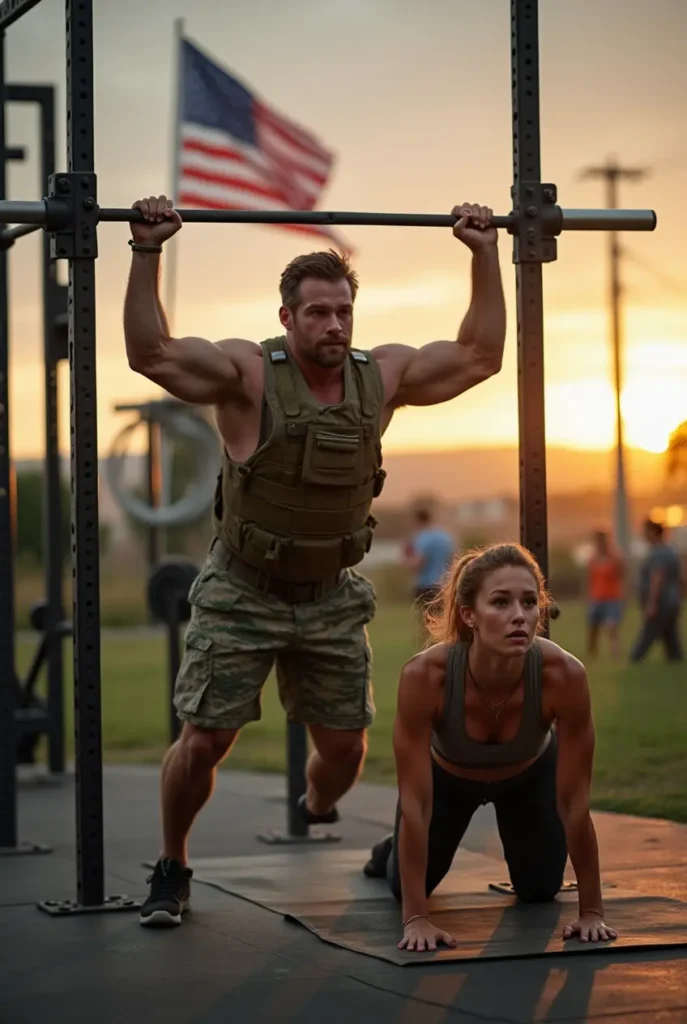
Murph Workouts: How to Get Started with Training
Starting Murph workouts may seem intimidating at first glance. The workout is tough. It includes a one-mile run, 100 pull-ups, 200 push-ups, 300 air squats, and another one-mile run. It’s often performed wearing a 20 lb weighted vest. This intense routine demands not just physical strength but mental toughness too. That’s why preparation matters.
Whether you’re a seasoned athlete or a CrossFit newbie, building a smart and scalable training plan is crucial. Below, we’ll walk you through the essential components of getting started with Murph workouts. From weekly training structures to strength and endurance strategies, you’ll learn how to prepare and thrive in this challenge.
Preparing for Murph Workouts: A Training Plan
Proper preparation helps avoid injury and builds confidence. A structured training plan allows your body to gradually adapt to the demands of Murph workouts. Here’s how to start:
Key Exercises to Incorporate into Your Routine
Murph workouts revolve around three fundamental movements: pull-ups, push-ups, and running. Each targets different muscle groups and collectively challenges your full body. Let’s break them down:
- Pull-ups: These target your back, shoulders, and arms. Start with assisted pull-ups or use resistance bands if you’re a beginner. Gradually reduce assistance as you gain strength. Practicing negatives (slow descents) also builds pulling power.
- Push-ups: Great for chest, triceps, and core. Focus on proper form. If regular push-ups are too hard, begin with incline push-ups on a bench or box.
- Running: Murph includes two one-mile runs. To prepare, incorporate interval runs, hill sprints, and tempo runs. These boost speed and cardiovascular efficiency.
Additionally, work on air squats. Though they seem simple, 300 reps require solid form and muscular endurance. Incorporate 3–4 sets of high-rep air squats into your training days to condition your legs.
Weekly Training Structure
Consistency wins. A good weekly Murph training plan balances volume, recovery, and gradual progression. Here’s a sample 4-day-per-week structure:
- Day 1 (Strength Focus)
- Pull-up progression drills
- Push-up form and tempo sets
- Squat endurance sets
- Core work (planks, hollow holds)
- Day 2 (Endurance Focus)
- 2–3 mile run or interval training
- Air squat ladder (increase reps every round)
- Stretch and foam roll
- Day 3 (Murph Simulation – Scaled)
- Half Murph: 800m run + 50 pull-ups + 100 push-ups + 150 squats + 800m run
- Modify pull-ups or use assistance if needed
- Time your workout to track progress
- Day 4 (Mobility & Active Recovery)
- Dynamic stretching
- Light cardio (bike or row)
- Foam rolling and nutrition planning
Recovery is part of training. Don’t skip it. Sleep well and eat whole foods rich in protein and nutrients.
Building Endurance for Murph Workouts
Murph workouts test your cardiovascular and muscular endurance. To handle the volume, your body must learn to sustain effort over time. That’s where targeted endurance training comes in.
Long-Distance Running Tips
The one-mile runs at the beginning and end of Murph are often underestimated. Without proper training, your body may fatigue before you even reach the pull-ups. Here’s how to build up:
- Run 2–3 times per week
Mix long steady runs (2–3 miles) with tempo or interval work. This boosts aerobic capacity and speed. - Focus on pacing
Learn your sustainable pace. You shouldn’t sprint the first mile. Instead, aim for a steady, comfortable speed that lets you conserve energy for bodyweight exercises. - Use a heart rate monitor
Training in zone 2 (aerobic) builds endurance efficiently. Your body adapts by increasing oxygen delivery to muscles. - Include recovery runs
These low-intensity sessions improve blood flow and aid muscle repair.
Cardio Endurance Exercises
Running is crucial, but so is cross-training. Mix in other endurance builders like:
- Rowing: Targets full-body stamina and mimics running fatigue.
- Bike sprints: Boost leg endurance and burn calories fast.
- Jump rope: Enhances coordination and cardiovascular conditioning.
- Burpees: Simulate fatigue under pressure, just like Murph.
When mixed with bodyweight training, these exercises help build aerobic capacity for the entire workout.
Strength Training for Murph Workouts
Murph workouts are not just about surviving the run. You must build the strength to push through 600 reps of bodyweight exercises. Strength training builds muscular endurance, prevents injury, and increases efficiency during WODs.
Exercises to Improve Strength for Push-ups and Pull-ups
Rather than simply repeating push-ups and pull-ups endlessly, you should strengthen supporting muscle groups:
- Lat pulldowns and rows
Build the pulling muscles needed for efficient pull-ups. - Incline bench presses and dips
Improve pushing power and arm endurance. - Eccentric pull-ups
Jump up, then slowly lower yourself. It teaches control and strength. - Push-up progressions
Vary hand placement, tempo, and elevation to keep challenging your muscles.
Use resistance bands for pull-up assistance. Over time, reduce band strength as your back and biceps grow stronger.
Building Muscle with Functional Movements
Functional fitness lies at the core of CrossFit. You’re not just training to look good. You’re training to move better. Incorporate compound exercises like:
- Deadlifts: Improve overall strength, especially your posterior chain.
- Squats: Focus on air squats but also train with weighted squats for power.
- Push presses: Build explosive upper-body strength.
- Farmer’s carries: Train grip and core, both essential for pull-ups and transitions.
Strength training sessions should include supersets and circuit formats. These mimic the intensity of Murph and help your body handle high-rep fatigue.
Tip: Don’t overload your body with heavy weights too close to Murph day. Peak with moderate loads and high reps in the last week.
Final Thoughts
Murph workouts demand more than just physical effort. They require a plan—a balanced blend of strength training, endurance work, and intelligent recovery. Start small. Scale up. Track your times and reps weekly. Allow your body to adapt at a sustainable pace.
With the right training approach, you’ll not only finish the Murph workout—you’ll dominate it.
Now that you know how to get started, the next step is simple: show up, stay consistent, and give it your all.
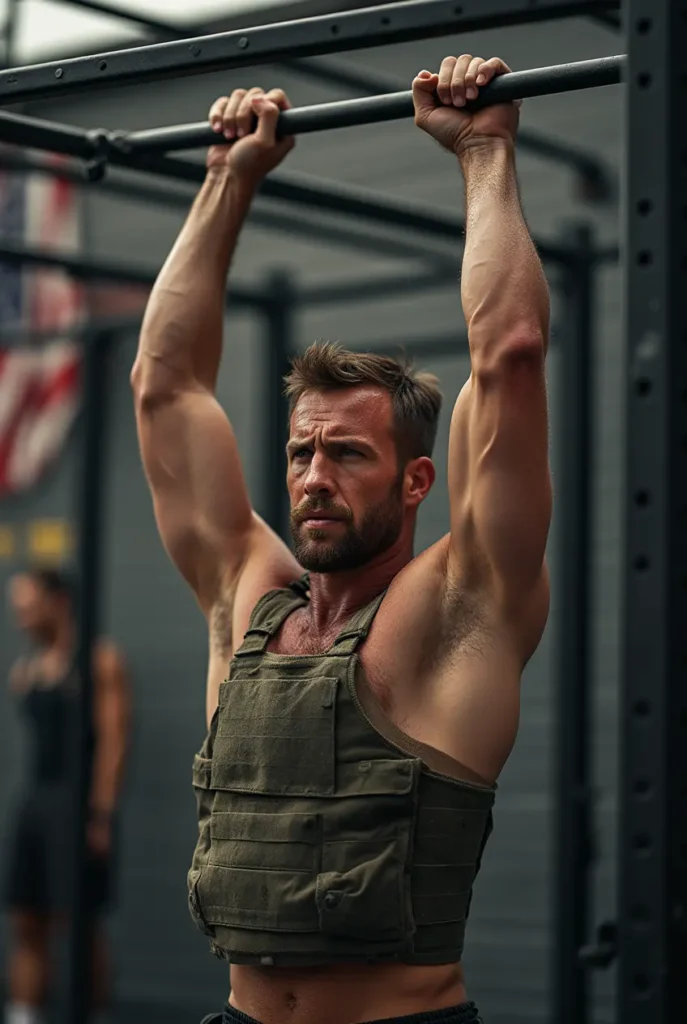
Murph Workouts: Variations and Modifications for Different Fitness Levels
The Murph workout is one of the most iconic CrossFit WODs (Workouts of the Day). It’s a test of physical strength, endurance, and mental resilience. Designed to honor Lieutenant Michael Murphy, a Navy SEAL who died in combat, this workout has become a Memorial Day tradition for many. However, not everyone starts with elite-level fitness. Whether you’re new to fitness or a seasoned athlete, there are Murph workout variations and modifications to suit your level.
In this guide, we’ll break down how to scale the Murph workout for beginners, modify it for elite athletes, and explore alternative Murph-style challenges to keep your training exciting and effective.
Scaling Murph Workouts for Beginners
Step-by-Step Approach for Newcomers
If you’re new to fitness or CrossFit, jumping into the full Murph workout can feel intimidating. The original Murph WOD involves:
- 1-mile run
- 100 pull-ups
- 200 push-ups
- 300 air squats
- Another 1-mile run
All while wearing a 20 lb weighted vest. For beginners, that’s a major ask. But don’t worry — it can be safely scaled.
The first step is to ditch the weighted vest. Focus on building proper form and stamina first. A common modification for beginners is the Half Murph:
- 800-meter run
- 50 pull-ups
- 100 push-ups
- 150 air squats
- 800-meter run
If that still seems too much, break it down further. Try the Quarter Murph, which is ideal for complete novices. It includes a 400-meter run, followed by 25 pull-ups, 50 push-ups, and 75 squats, ending with a 400-meter run.
You should also consider partitioning the reps. Instead of performing all 100 pull-ups at once, break them into manageable sets. A classic method is the Cindy-style partition: 20 rounds of 5 pull-ups, 10 push-ups, and 15 squats. This keeps your form solid and allows for better pacing.
Start slow. Focus on completing the reps with proper form instead of rushing through them. Use resistance bands for pull-ups or replace them with ring rows or inverted rows. For push-ups, go for knee push-ups if full reps are too difficult. If you’re struggling with squats, reduce depth or reps initially.
How to Adjust the Number of Reps and Distances
One of the best things about the Murph workout is its flexibility. You can tailor it to suit your fitness level without compromising the challenge.
Reps can be cut in half or even into thirds. If you’re not ready for 100 pull-ups, try 30. Keep progressing over time. Gradual increases will lead to long-term success.
Running distances can also be modified. Instead of a 1-mile run, substitute it with 800 meters or even 400 meters if you’re just starting. Alternatively, perform a low-impact cardio alternative such as rowing, cycling, or a brisk incline walk on a treadmill.
Use a timer to monitor your pace. Don’t overexert during the first half. The final run will test your endurance, so reserve energy.
A key component for beginners is consistency. Training regularly with a focus on form, endurance, and strength will help you complete the full Murph over time.
Advanced Murph Workouts for Elite Athletes
Increased Intensity (Weighted Vest, Extra Reps)
For advanced athletes, the basic Murph can evolve into a next-level fitness challenge. To add difficulty, the classic method is the use of a weighted vest—20 lbs for men and 14 lbs for women.
This added resistance increases heart rate, fatigues muscles faster, and tests mental toughness. It also mimics real-world conditions faced by military personnel, making it both symbolic and physically taxing.
But there’s more. Some elite athletes push further:
- Double Murph: Completing two full rounds of the Murph back-to-back.
- Murph with strict pull-ups: Replacing kipping pull-ups with strict or even weighted pull-ups.
- Hand-release push-ups or clapping push-ups to challenge upper-body explosiveness.
Another popular variation is Murph with sandbags or kettlebells. Holding weight while running or integrating weighted squats enhances core engagement and power output.
If you’re an elite athlete, timing matters too. Many aim to complete the Murph in under 40 minutes, some even under 30. However, speed should never come at the cost of safety or form.
Training Strategies for Those Aiming for Personal Bests
Elite athletes must train smart. To optimize performance and reduce injury risk, a structured training plan is vital. This includes:
- Endurance runs (2-3 times per week)
- Bodyweight strength training focusing on high reps
- Interval sessions to build cardiovascular efficiency
- Grip and shoulder endurance work for pull-ups
- Mobility training to avoid fatigue-related injuries
Pre-workout, a proper warm-up is essential. Include dynamic stretching, mobility drills, and light cardio. Afterward, prioritize recovery techniques such as foam rolling, stretching, and nutrition.
Focus on form under fatigue. The Murph isn’t just a test of fitness — it’s a test of mental endurance. Developing mindfulness during training will help you push through plateaus.
Track your progress weekly. Log your time, note how you feel, and tweak your approach. Over time, personal records will follow.
Alternative Murph Workout Challenges
Similar Workouts That Still Push Your Limits
Not every athlete wants to repeat the Murph weekly. For variety and challenge, you can rotate in alternative WODs with a similar structure.
Some effective options:
- Mini Murph: A scaled version with 600m run, 30 pull-ups, 60 push-ups, and 90 squats.
- The Half Cindy + Half Murph: 10 rounds of Cindy (5 pull-ups, 10 push-ups, 15 squats) followed by a 1-mile run.
- Hero WOD “DT”: Focused on strength (barbell work) for a different kind of intensity.
- “The Seven” WOD: High-volume reps of compound movements like handstand push-ups and thrusters.
These alternatives train similar systems: endurance, strength, and mental grit. Rotating through them keeps the routine fresh and reduces the risk of overuse injuries.
You can also design your own Murph-style challenge. For example:
- 800m run
- 25 kettlebell swings
- 50 push-ups
- 100 air squats
- 800m run
This keeps the structure while switching up movements for cross-training benefits.
Incorporating Different Equipment (e.g., Kettlebells)
One of the most effective ways to vary Murph workouts is by introducing equipment:
- Kettlebells can be used in goblet squats, weighted lunges, and swings.
- Resistance bands offer support during pull-ups or added resistance for push-ups and squats.
- Medicine balls add a cardio element when combined with wall balls or slams.
- Weighted vests aren’t the only wearable option—try ruck sacks for outdoor Murph variations.
If you’re training at home and lack equipment, fill a backpack with books or water bottles. Use a towel for rows if there’s no pull-up bar. Fitness should be adaptable, and Murph workouts are perfect for creativity.
Combining equipment helps develop muscle coordination, stability, and power. It also adds variety to training, reducing boredom and plateau risk.
Safety comes first. Always test new variations with lighter loads. Pay attention to form and fatigue, especially when using unstable weights like kettlebells.
Final Thoughts
Murph workouts are more than just physical challenges — they represent dedication, discipline, and sacrifice. Whether you’re a beginner scaling down reps or an elite athlete chasing a new personal best, the beauty of Murph lies in its adaptability.
Every level of fitness can benefit from its principles: endurance, strength, resilience, and focus. Through intelligent modifications and creative variations, you can keep pushing your limits safely and effectively.
Remember: fitness is a journey, not a race. Start where you are, adapt to your capacity, and progress with purpose. The Murph challenge is waiting for you — and no matter how you approach it, it will always make you stronger.
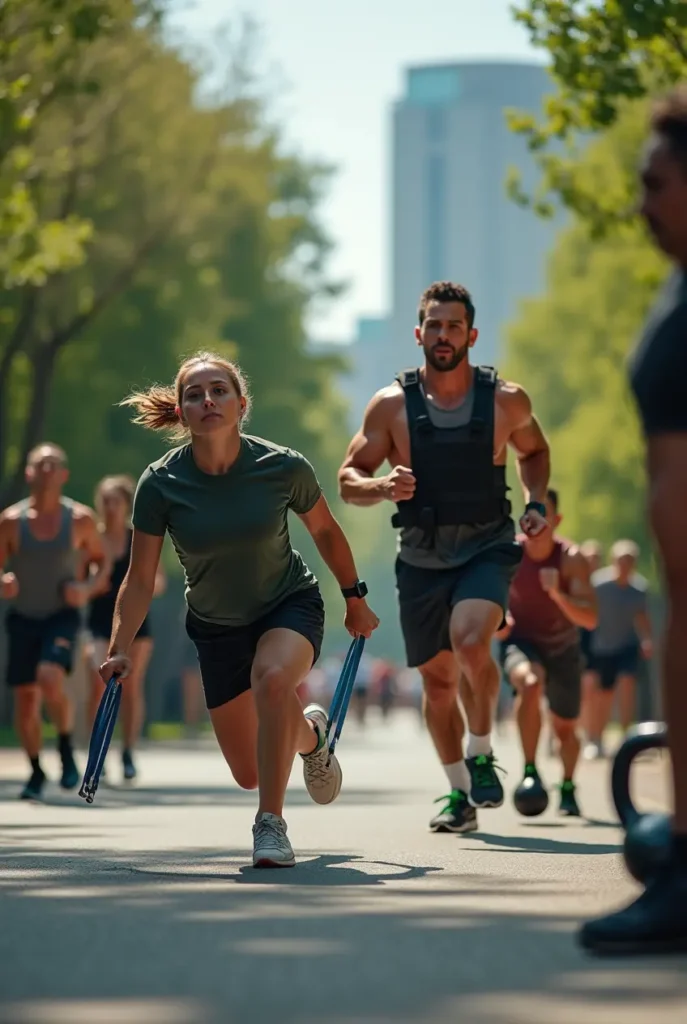
Murph Workouts: The Importance of Mental Focus and Motivation
Murph workouts are physically demanding. But more than that, they are mental battles. Whether you’re a seasoned CrossFitter or just starting out, what separates a successful Murph from a failed attempt is often the strength of your mindset. This workout pushes your limits. It challenges your body, yes—but it also tests your mental endurance. Every rep, every run, every breath during a Murph workout demands focus, drive, and mental grit.
This section explores how staying motivated during Murph workouts, building resilience, and connecting to something greater—like Memorial Day—can elevate your experience and performance.
Staying Motivated and Focused During Through the Grind
Murph workouts are long and grueling. Completing one takes more than muscle—it requires purpose and mental strategy. Most people don’t quit because they’re too tired. They quit because they lose motivation or focus. That’s where mental tricks and internal drive come into play.
Mental Tricks to Push Through Tough Moments
When exhaustion hits, you must have tools to keep moving forward. The first tool is positive self-talk. Telling yourself “I can do this” or “Just one more set” can change your energy. This technique has been used by elite athletes, including Navy SEALs, to break through physical and mental barriers. The brain believes what you tell it, especially when under stress.
Another strategy is visualization. Picture yourself finishing the Murph strong. Imagine crossing that mental finish line with pride. This fuels your determination. Your brain creates pathways that believe it’s possible. That belief can power your next pull-up or push-up when your body says stop.
Breath control is also crucial. Deep, steady breathing can reset your mind. It lowers anxiety and keeps your heart rate manageable. During Murph workouts, breathing techniques can prevent panic and help you stay in rhythm.
Lastly, mantras like “no quit,” “earn it,” or “for Murph” can ground your focus. Choose one that resonates and repeat it with intention. These words become anchors when the workout gets brutal.
Setting Mini Goals During the Workout
Breaking the Murph down into small, digestible goals makes it manageable. Start by dividing it into parts. For example, split the 100 pull-ups into ten sets of ten. Focus only on completing that set. Then move to the next. These mini goals give your mind something to grab onto, creating momentum.
Next, track your progress mentally or physically. Use a whiteboard, a chalk line, or your fingers. Seeing progress is a powerful motivator. It proves that you’re moving forward, even if slowly.
You can also set time-based goals. For example, aim to finish your first mile in a certain time or complete all push-ups within ten minutes. These time chunks provide structure and urgency without overwhelming you.
Breaking the workout into micro-wins keeps the brain engaged. Every small goal achieved gives a sense of accomplishment, feeding your motivation.
Resilience Gained Through Repetition
Murph workouts are physically intense, but their true value lies in their ability to build mental strength. Every drop of sweat, every shaky rep, and every breathless moment pushes you closer to your limits—and that’s where growth happens.
Overcoming Fatigue and Discomfort
Fatigue is inevitable. Muscles burn, lungs gasp, and doubt creeps in. This is where resilience takes the stage. The more often you face discomfort head-on, the more your tolerance grows. You learn to push when it’s hard. That’s not just fitness. That’s life training.
The Murph workout is long—often taking 45 minutes or more. During that time, your mind has opportunities to quit. Resilience means saying “not yet” every time quitting becomes an option.
With repetition, your body adapts. But more importantly, your mind adapts faster. It remembers that it has been through worse—and come out stronger. That memory becomes your shield for future challenges.
Overcoming discomfort also teaches control. You realize pain doesn’t mean danger. You separate discomfort from injury. This awareness helps you work smarter and longer in other workouts too.
The Role of Murph Workouts in Personal Growth
Murph workouts do more than shape muscles. They build character. Finishing a Murph isn’t just about endurance—it’s about identity. You become the kind of person who finishes what they start.
Each rep teaches patience. Each run sharpens mental clarity. And each drop of sweat carries purpose.
Personal growth is a byproduct of this battle. You prove to yourself that you’re stronger than yesterday. You learn discipline, persistence, and humility. Murph doesn’t allow shortcuts. That honesty breeds self-respect.
And that self-respect spills over. Into relationships, work, and life. Murph is a mirror. It reflects your mindset—and shapes it with every workout.
Many athletes return to Murph weekly, monthly, or yearly not just to improve their time—but to reset mentally. To remind themselves of what they’re capable of when things get hard.
Honoring the Murph Tradition
One of the most meaningful aspects of Murph workouts is their connection to service, sacrifice, and honor. While anyone can do a Murph any time of year, Memorial Day holds special significance.
Tradition of Completing Murph Workouts on Memorial Day
The Murph workout honors Lieutenant Michael Murphy, a U.S. Navy SEAL who died in combat in Afghanistan in 2005. The workout was one of his favorites, originally called “Body Armor.” It was renamed “Murph” in his memory.
Each Memorial Day, thousands of people across the U.S. and worldwide perform this workout. It’s more than exercise. It’s a tribute.
Participants often wear a weighted vest during the workout, symbolizing the burden carried by soldiers in combat. This simple gesture adds physical strain—but also deepens emotional connection.
The structure of the Murph—1 mile run, 100 pull-ups, 200 push-ups, 300 air squats, and another 1-mile run—remains unchanged. It serves as a raw, humbling reminder of sacrifice.
This Memorial Day tradition grows stronger every year. It brings people together, uniting communities in gratitude and remembrance.
Honoring Fallen Soldiers While Pushing Your Limits
While Murph workouts are personal, doing them on Memorial Day ties your effort to something bigger. Each rep becomes a salute. Each breath, a reminder of those who gave everything.
Pushing through pain takes on new meaning. You’re not just working out—you’re honoring lives. This sense of purpose lifts your effort. It elevates your why.
Many participants write names of fallen soldiers on their vests. Some dedicate the workout to specific heroes. Others simply show up in silence, letting action speak louder than words.
This emotional connection becomes a powerful motivator. When the muscles scream, you remember the faces behind the sacrifice. That memory fuels your finish.
Murph on Memorial Day is a tradition rooted in respect. It bridges fitness and service, turning a tough workout into a national symbol of resilience and gratitude.
Conclusion: Murph Workouts Are Mental as Much as Physical
Murph workouts challenge your physical limits. But their true power lies in the mental game. They train your mind to focus, persist, and thrive under pressure.
With strategies like visualization, positive self-talk, mini goals, and mental anchoring, you can push through even the hardest moments. As you grow mentally, you build resilience—a skill that lasts beyond the gym.
Performing the Murph on Memorial Day connects that strength to something greater. It transforms the workout from a fitness challenge to a tribute filled with meaning and honor.
So whether you’re starting your first Murph or returning for another round, remember: your body is strong—but your mind is stronger. And with the right focus and motivation, there’s no limit to what you can achieve.

